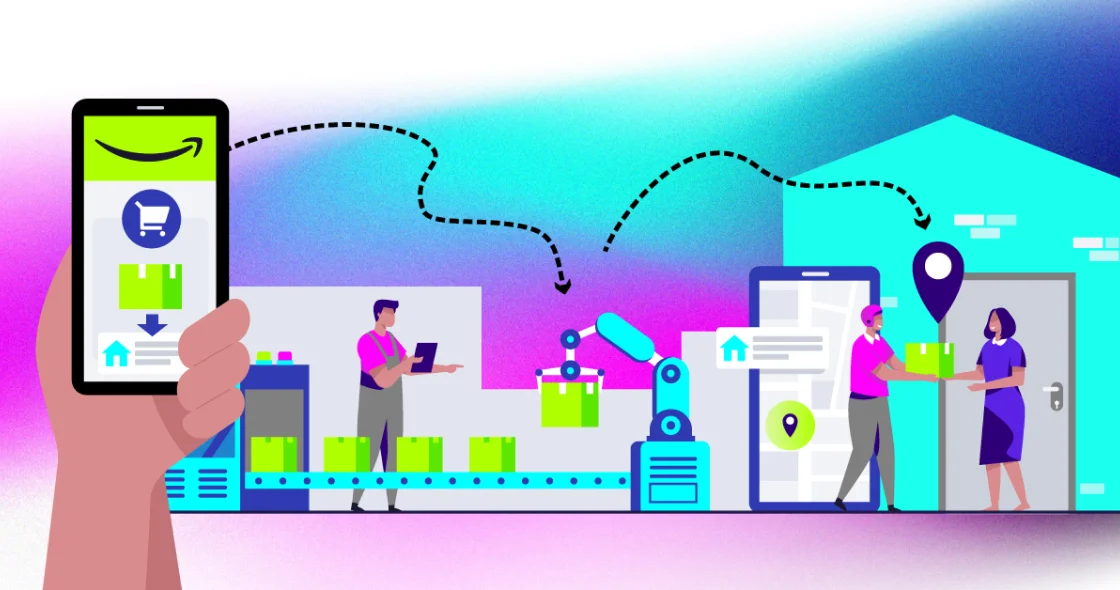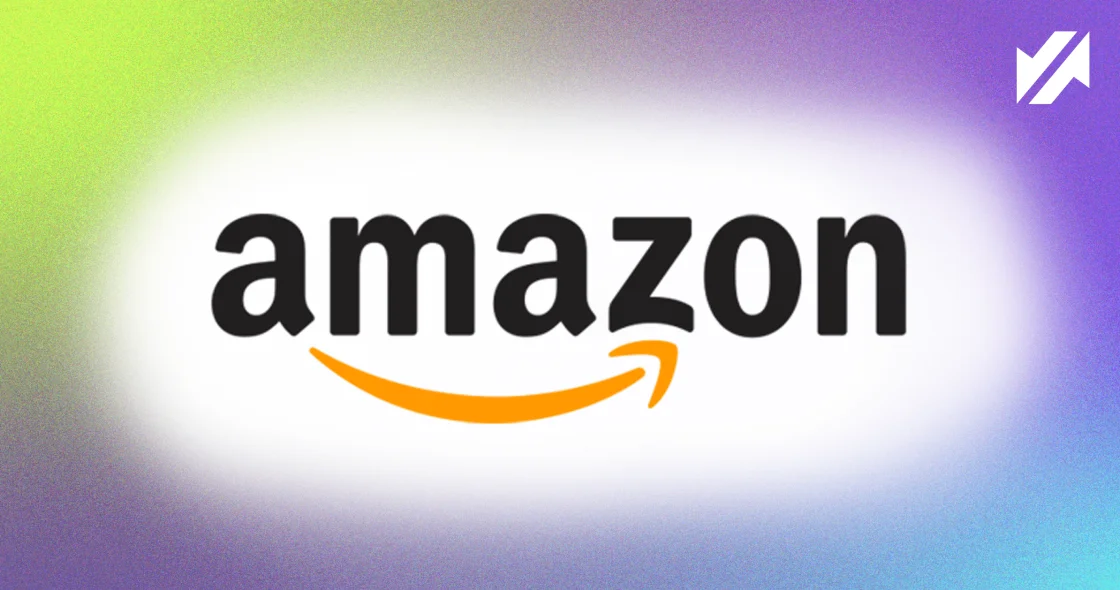Selling on Amazon can be stressful when you shoulder 100% of the responsibility. Using a program like Amazon’s FBA (Fulfillment By Amazon) could relieve some of that burden, allowing sellers to focus on the development and growth of their business.
There are pros and cons to every business choice, of course, and FBA is no exception. Understanding what Amazon FBA is and how it works is crucial to knowing if it is the right choice for your and your business.
What Is Fulfillment by Amazon (FBA) – And How Does It Work?
There are two methods for selling and shipping your products on Amazon: FBA (Fulfillment by Amazon) and FBM (Fulfillment By Merchant.)
Amazon describes FBA as:
“A service that allows businesses to outsource order fulfillment to Amazon. Businesses send products to Amazon fulfillment centers and when a customer makes a purchase, we pick, pack, and ship the order. We can also provide customer service and process returns for those orders.”
To sum it up, using Amazon FBA will hand over a large portion of the responsibility for fulfilling your customer orders. FBM, on the other hand, will keep all of the picking, packing, and shipping of your orders in your control.
The Amazon FBA Process Step-by-Step
Boiled down, setting up and managing Amazon FBA is a relatively simple (but ongoing) five-step process:
- Set up an Amazon seller account.
- Set up FBA through Seller Central.
- Create product listings, and specify FBA inventory.
- Prepare and ship products to a fulfillment center.
- After Amazon receives the inventory, customers can start placing orders.
From the sellers’ perspective, this may seem like a small aspect of the whole business to hand over to Amazon, but it is arguably the main part of your business that customers will care about.
The Benefits of FBA for Amazon Sellers
One of the biggest benefits of FBA is the eligibility for Prime. Not only does it give your customers free two-day shipping, it also increases your sales by favoring FBA sellers for the buy box.
Alongside the free and fast shipping, customers also get the benefit of trusted customer service and returns. Seeing the Prime badge of a product adds a layer of reliability to the listing, as customers know there will be a quick solution if anything goes wrong.
Within FBA, there are a number of other services that your business would have access to, each of which is, itself, a potential benefit. They are:
- Small and Light: This service reduces the cost of fulfilling orders for low-cost, small, and lightweight products.
- Subscribe & Save: This option provides discounts on eligible products for repeat customers.
- Pan-EU: Sellers may want to provide fast delivery in Prime-eligible EU countries, which this facilitates.
- Export: Expand your business into 100+ countries without the complexities of international business.
- Multi-Channel Fulfillment: Use FBA fulfillment centers to fulfill orders on your own or third-party sites.
These services are designed to simplify and streamline certain aspects of your business. They may not necessarily apply, especially if you ship large items, but they highlight some of the versatility available through FBA.
The Challenges of FBA & FBM for Amazon Sellers

Now that we’ve covered what Amazon FBA is, and some of its most immediate benefits, it’s important to explore some of the program’s drawbacks. The challenging aspects of FBA, however, should really begin with a comparative analysis between it and its sister program, FBM.
When it comes to the features offered, FBA has Prime eligibility, the Buy Box boost, and Amazon customer service. FBM has only the features that come with a self-owned and operated business. Shipping speeds are dependent on the carrier you choose, your chances of winning the Buy Box are limited, and customer service falls on your shoulders.
Inventory Is Critical to Amazon FBA Sellers
The biggest difference between FBA and FBM really comes down to the managing your inventory. With FBA, inventory needs to be prepared as per Amazon’s standards and shipped to the one of its fulfillment centers. As such, accurately predicting how much stock to send to Amazon fulfillment centers (and when to send it) is a huge part of running an FBA business. Thankfully tools like SoStocked will help manage your FBA inventory from the outset, and assist sellers with any issues that may occur during the lifecycle of their business.
Under FBA, managing the picking, packing, shipping, and customer service all falls on Amazon. With FBM, this all falls on you and your staff, but keeping your business as FBM allows you more control and freedom over inventory and fulfillment.
Although it may feel like a loss of control over a large portion of your business, letting Amazon control the fulfillment allows you to shift your focus from shipping to selling. You can spend more time developing future products and growing the business instead of worrying about fulfillment, but there are other issues you’ll have to contend with.
The Pitfalls of FBA Profit Management
It goes without saying that FBA isn’t cheap or simple. There are different types and levels of fees and surcharges that can make it difficult to make financial predictions.
The flip side of this is that being part of FBA and being Prime-eligible increases sales volume. Customers often favor Prime listings for the free shipping, hassle-free returns, and the implicit trust from purchasing through Amazon Prime.
This doesn’t mean customers never purchase from an FBM seller or listing, but the listing will have to work harder to combat the Prime Badge. Getting your listing fully optimized will boost your business, regardless of FBA or FBM status. Using software like SellerTools can optimize and future-proof your FBA business.
Managing fulfillment yourself as part of FBM means all the costs are dependent on you and your negotiations with logistics, storage, picking, etc. They may not end up being cheaper than Amazon fees, plus you have the burden of managing the day-to-day operations of fulfillment on top.
Amazon Sellers Vs. FBA Fee Increases

Of course, all of these benefits and business boosts come with a cost, or costs, in the form of Amazon fees. This is perhaps the most important challenge to consider as an FBA seller, especially going into 2023, since the fees Amazon is levying — and will continue to levy — are increasing at an exponential rate, relative to what was historically the case.
Amazon increased its FBA fees multiple times during the 2022 holiday season, and recently announced a roll-out of fee hikes that will very seriously affect the way FBA sellers run their businesses. Luckily, there are ways sellers can protect their accounts and profitability against sudden changes like FBA fee hikes.
In an effort to help the seller community, Carbon 6 and its partners will be releasing more solutions for maintaining profitability during FBA fee hikes, so keep checking back for regular updates.
That all said, it’s important to get an overall snapshot of the way Amazon breaks down its fees, and how they affect the bottom lines of all sellers. The following are the overarching fees that often see the most impactful increases.
- Inventory storage fees: These fees are charged for all items stored in an Amazon fulfillment center. They are based on average daily volume of inventory in cubic feet.
- Long-term storage fees: These are applicable to items at fulfillment centers for more than 365 days.
- Fulfillment fees: Charged per unit for picking and packing orders, shipping and handling, customer service, and product returns, these fees face regular review by Amazon.
- Unplanned service fees: These are charged when inventory arrives at a fulfillment center without prior notice or labeling, causing unplanned services.
- Removal order fees: These fees are charged per-item when Amazon returns or disposes of your inventory.
- Returns processing fee: Amazon charges on orders when it must provide a customer free return shipping.
It is worth noting that this list of fees is not exhaustive, and one of the main issues the seller community has with FBA, is the sudden (and often) increase or addition of fees and surcharges.
Is FBA Amazon Right for You – And Are There Alternatives?
Even though the benefits of FBA make it seem like the obvious choice, it is not the only choice for your business. FBM is where many sellers start their Amazon journey, with all the responsibility and control they could want. Then again, FBA alternatives don’t end there.
As well as FMB, there is also Seller Fulfilled Prime (SFP) which is a mixture of FBA and FBM benefits. SFP allows a business to deliver directly to Prime customers from their own warehouses. An SFP listing:
- Displays the Prime Badge.
- Offers customers two-day shipping with no extra charge.
- Is more likely to be the featured “Add to Basket” product.
- Appears more easily in Prime-related searches and filters.
Of course, as appealing as it might be, registering for SFP is not as easy as signing up for FBA. There are waitlists for signing up and trial periods to conquer first. So ultimately, knowing whether FBA, FBM, or SFP are right for your business is a unique decision. You need to weigh up many factors including costs, future growth, and potential return before you can make the choice.
Many sellers do choose FBA, simply because the pros outweigh the cons for their business. The increased sales from Prime eligibility are much more appealing than the negative of the uncertain fees, and relinquishing control of fulfillment and customer service saves them time and effort.
Regardless of whether you decide to use FBA or FBM for your business, Carbon6 is here to help you simplify your success. Our toolkit can help Amazon sellers streamline stock management, PPC campaign optimization, Amazon reimbursements, and much more.







